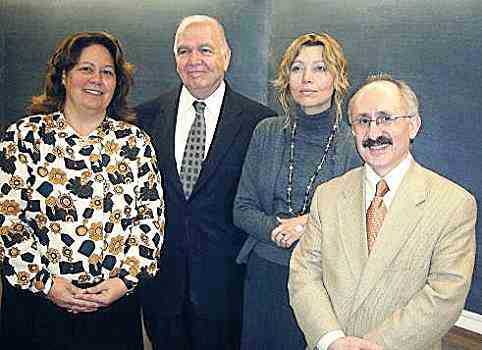
Genocide Research Zoryan Institute
Despite being based on a taboo topic that is subject to legal
restriction in Turkey, the Dadrian-Akcam book on the Turkish
Courts-Martial titled, “Tehcir ve Taktil:” DivanI Harb-i Ã-rfî
Zabitlar. Ittihad ve Terakki’nin Yargilanmasi, 1919-1922 is now in
its third edition, indicating remarkable interest in the topic of the
Armenian Genocide there. First published some sixteen months ago by
Bilgi University Press in Istanbul, this 732-page volume is a detailed
reconstruction, plus a historical and legal analysis of the post-WWI
Turkish military tribunals prosecuting the perpetrators of “crimes
against the Armenians” during the war, and is based on original
Ottoman sources. Jointly compiled and edited by Professors Vahakn N.
Dadrian, Director of Genocide Research at the Zoryan Institute, and
Taner Akcam, Kaloosdian/Mugar Chair in Armenian Genocide Studies at
Clark University, this compendium is ushered in by a 125pp extensive
introduction by Prof. Dadrian. It explores the criminal prosecution in
the 1919-1921 post-war period of the perpetrators of the wartime
Armenian Genocide. Supported by a succession of post-war but
pre-Kemalist Turkish governments, Turkish Military Tribunals spent
months gathering incriminating evidence as part of their pre-trial
interrogations. As a result, the Mazhar Inquiry Commission was able to
amass, classify and catalogue a wealth of evidence attesting to the
deliberate and planned nature of the wholesale liquidation of the
targeted Armenian population of the Ottoman Empire. Witness
testimonies included disclosures by high-ranking military officers,
governors of several ranks, and Young Turk Ittihad party leaders,
including the extensive affidavit supplied by wartime Third Army
Commander, General Mehmet Vehip.
Several aspects of these trials, unprecedented in Ottoman-Turkish
history, render the resulting documentation of the centrally organized
mass murder invaluable. Foremost among these is the nature of the
evidence-in-
chief, involving secret and top-secret official ciphers
issuing from Talat Pasha, Interior Minister, party chief and the prime
architect of the Armenian Genocide. Equally important, all these
ciphers were authenticated by competent officials from both the
Justice and Interior Ministries before being introduced as prima facie
evidence. Moreover, the defendants were confronted with these
documents asking them to verify the authenticity of their signatures
at the end of these documents.
An English language edition of this very important book is set to be
published by a major American University Press, hopefully before the
end of the year.
========================================================
The man between Müge Göçek and Elif Şafak is Richard Hovannesian, the racist UCLA professor who incited Armenian-American students to bomb the off-campus home of Prof. Stanford J. Shaw in 1977. The photo was taken in November 2005 when Göçek, Şafak and Akçam gave talks at a conference at UCLA in Los Angeles, with Hovannesian as the “moderator.” (There was nothing to moderate). It was a happy get-together for the 3 Turks, and they were the only speakers. They all sang the same tune, and received a loud applause from the audience. At the end of the conference Hovannesian congratulated the speakers and said: “Next time we meet, we will talk about the reparations Turkey will have to pay.” The photo widely circulated among the Armenian websites at that time. I remember well the picture and the piece I wrote at TF about the event at that time.
Ferruh Demirmen

Leave a Reply